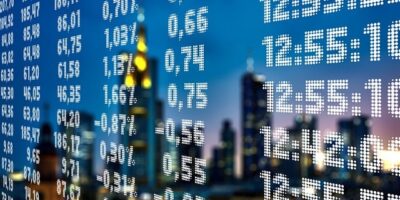What is a Contract for Difference?

What is a Contract for Difference? A Contract for Difference (CFD) is a type of financial derivative that allows traders and investors to speculate on price movements in a wide range of underlying assets, including commodities. CFDs are traded over-the-counter (OTC), meaning they are not traded on exchanges but are traded directly between two parties.
What is the History of Contract for Difference?
The Contract for Difference (CFD) was invented by Brian Keelan and Jon Wood in the 1990s while working for the London-based financial services firm, Smith New Court. Keelan and Wood created the CFD as a way for institutional investors to hedge their exposure to equity trades, but the concept quickly gained popularity among hedge funds and other professional investors.
In the early 2000s, CFDs became available to retail traders through online trading platforms. These platforms allowed individual investors to trade CFDs on a wide range of financial instruments, including stocks, currencies, and commodities.
CFDs gained popularity among retail traders because they offered several advantages over traditional stock trading. For example, CFDs allowed traders to speculate on the price movements of financial instruments without owning the underlying asset. This meant that traders could profit from both rising and falling markets, and they could do so with leverage, which magnified their potential gains.
How Does a Contract for Difference Work?
In a CFD, the buyer and seller agree to exchange the difference in the price of the underlying asset between the time the contract is opened and when it is closed. If the price of the underlying asset rises, the buyer of the CFD will make a profit, and if the price falls, the buyer will incur a loss. CFDs do not involve the transfer of ownership of the underlying asset, and traders and investors are only required to put up a small fraction of the total value of the trade as collateral.
CFDs are a popular tool for speculating on price movements in commodities because they offer several benefits, including:
- Leverage: CFDs allow traders and investors to access large amounts of capital with a relatively small investment, which can magnify potential gains but also increase potential losses.
- Flexibility: CFDs can be traded on a wide range of commodities, including precious metals, energy, and agricultural products, and can be traded long or short, meaning that traders and investors can make profits in both rising and falling markets.
- Ease of access: CFDs are traded OTC, which means that they can be accessed through a wide range of brokerages and financial institutions, and can be traded online or over the phone.
However, CFDs also carry significant risks, including the possibility of rapid and substantial losses, and it’s essential for traders and investors to carefully consider these risks before making any investment decisions. This may include using stop-loss orders and other risk management strategies and seeking the advice of a financial advisor.
What Assets Can Be used in a Contract for Difference?
Contracts for Difference (CFDs) can be used to trade a wide range of underlying assets, including:
- Commodities: CFDs can be used to trade commodities such as precious metals, energy products, and agricultural products. For example, a trader might use a CFD to speculate on the price of crude oil, gold, or corn.
- Stocks: CFDs can also be used to trade individual stocks, including those listed on major stock exchanges such as the NYSE and NASDAQ. For example, a trader might use a CFD to trade the shares of a large tech company like Apple or Amazon.
- Indices: CFDs can also be used to trade stock indices, which represent the performance of a basket of stocks. For example, a trader might use a CFD to trade the S&P 500 Index, which tracks the performance of 500 large US companies.
- Forex: CFDs can also be used to trade currency pairs, such as the US Dollar against the Euro. For example, a trader might use a CFD to trade the EUR/USD currency pair.
- Cryptocurrencies: CFDs can also be used to trade cryptocurrencies, such as Bitcoin and Ethereum. For example, a trader might use a CFD to trade the price of Bitcoin.
These are just a few examples of the many underlying assets that can be traded using CFDs. It’s important to remember that CFDs are complex financial instruments that carry significant risks, and traders and investors should carefully consider these risks before making any investment decisions. This may include seeking the advice of a financial advisor and using stop-loss orders and other risk management strategies.
Risks of Trading Contracts for Difference?
There are several risks associated with trading Contracts for Difference (CFD), including:
- High Leverage: CFDs offer leverage, which means that traders can control a larger position with a smaller initial investment. However, this also means that losses can be magnified, and traders may lose more money than they originally invested.
- Market Volatility: CFDs are a high-risk investment because the prices of underlying assets can be very volatile, and sudden price movements can cause significant losses.
- Counterparty Risk: When trading CFDs, traders are entering into a contract with a broker or dealer, which means that there is counterparty risk. If the broker or dealer goes bankrupt or is unable to meet its financial obligations, the trader may lose their investment.
- Overnight Financing Fees: When holding a CFD position overnight, traders may be charged overnight financing fees, which can add up and eat into profits.
- Lack of Regulation: CFDs are not regulated in all countries, and even in countries where they are regulated, the level of regulation may vary. This means that traders may be exposed to unscrupulous brokers or dealers who engage in fraudulent activities.
It is very important for traders to understand these risks and to carefully consider whether trading CFDs is appropriate for their financial situation and risk tolerance. It is also essential to choose a reputable and regulated broker or dealer and to use risk management strategies, such as stop-loss orders, to help mitigate potential losses.


